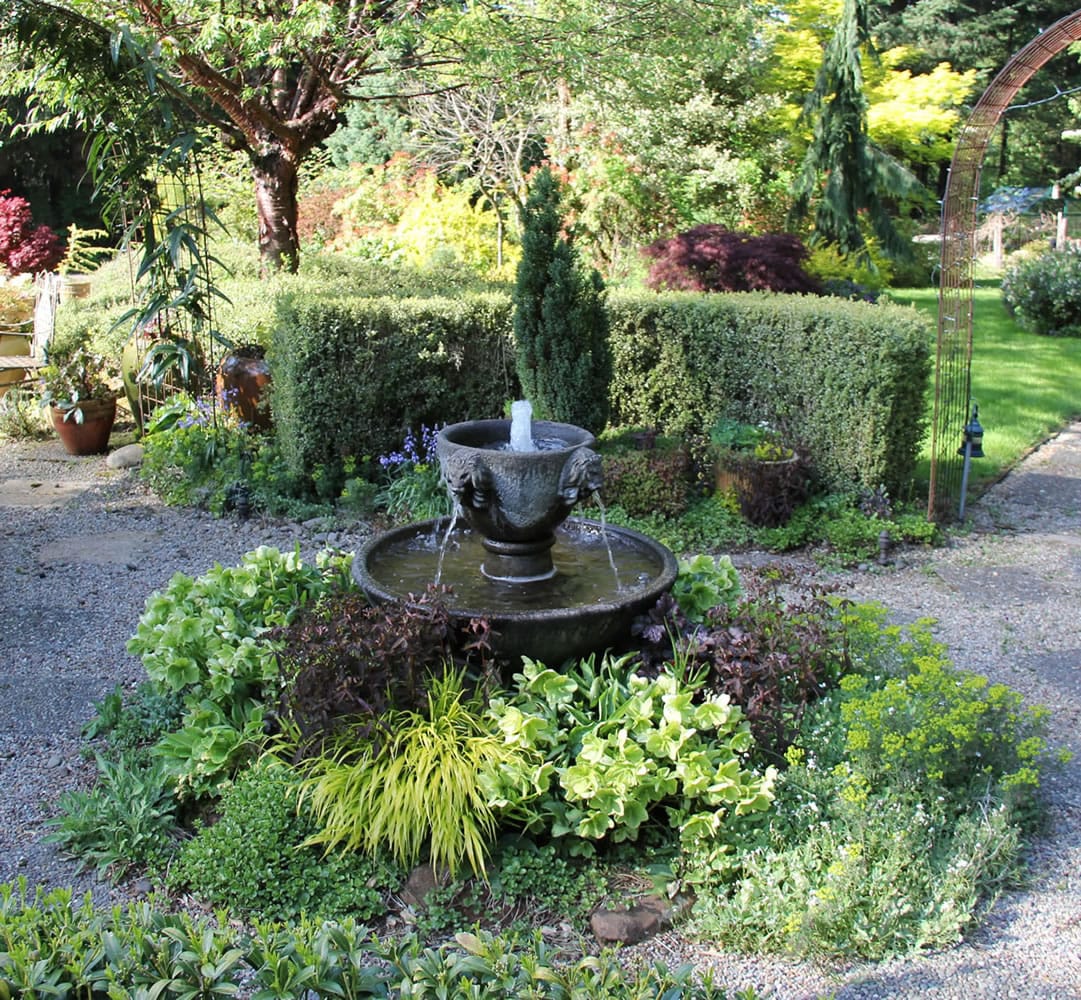Occasionally in late spring, I like to wander through the garden with the intention of seeing all that is right with my world. Spring is a season of great rewards. The round, plump peony buds blossom into flowers larger than my open hand. The dogwood blooms as if by magic from bare branches. Birdsong adds a melodious dimension to the garden, like the musical score to a springtime garden party. How happy I am today, to think back on the part I have played in all of this.
Of course, it’s really just the nature of things to grow and flower, blossom and bloom. Still, it was my idea to plant the geranium ‘Johnson’s Blue’ and the golden ‘Stella D’Oro’ daylily next to each other in the perennial border. The combination is enchanting. Hummingbirds find sustenance in the garden, but feeders hanging near my garden room windows bring them close enough to watch their flight and feeding in detail. I think George Gershwin summed it all up when he coined the phrase “‘S wonderful, ‘S marvelous.”
Direct planting
Now that Mother’s Day has passed, it’s safe to plant annuals directly in the garden. After a week of beautiful weather, I have seen gardening friends come out of hibernation and begin to spend more time out in the garden, as well as at local nurseries. By mid-May, frosts and freezes are unlikely to return and destroy any tender planting. Bedding plants put out in the garden in late spring surpass those sown a month earlier, especially if the weather has been fluctuating between warm and cold.
By now, the soil has had a chance to warm up. Most shrubs and perennials have filled out enough for you to see any gaps that need to be planted in garden beds and borders. To minimize transplanting shock, protect plants from extreme heat and strong sunlight, plant on an overcast day or in the evening. Although we are not thrilled with misty, gray weather after we have had a taste of sunny, warm spring days, it could be the best thing to happen to newly planted seedlings.



